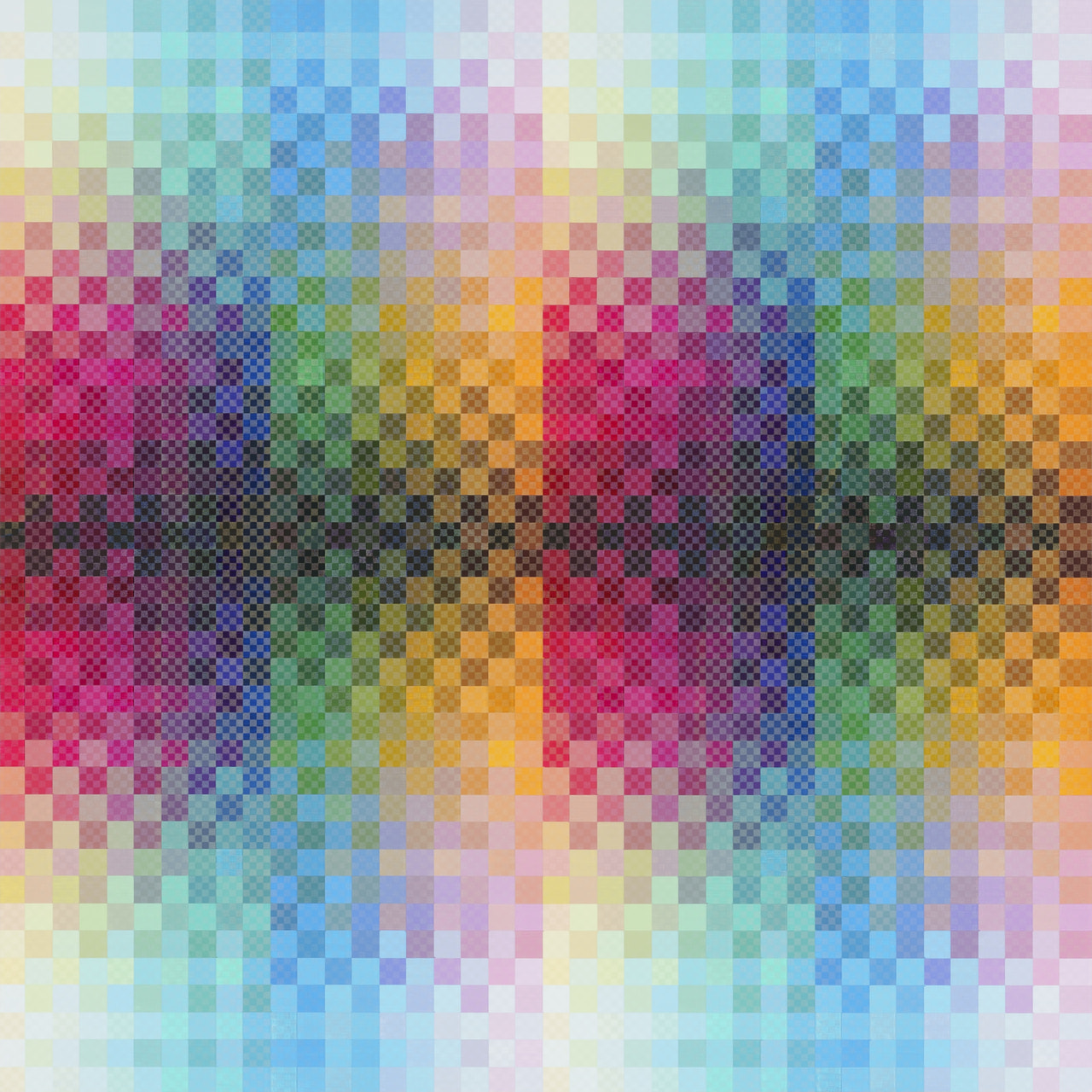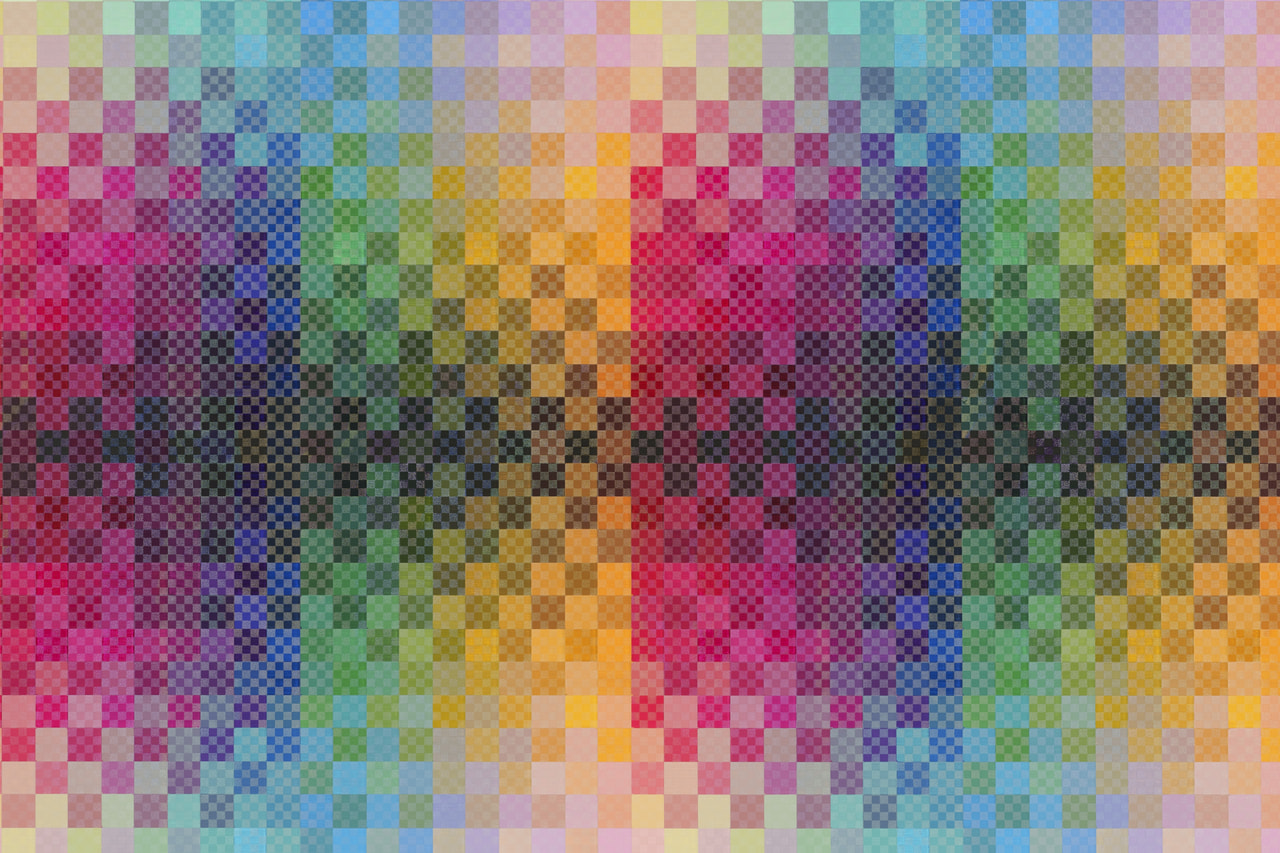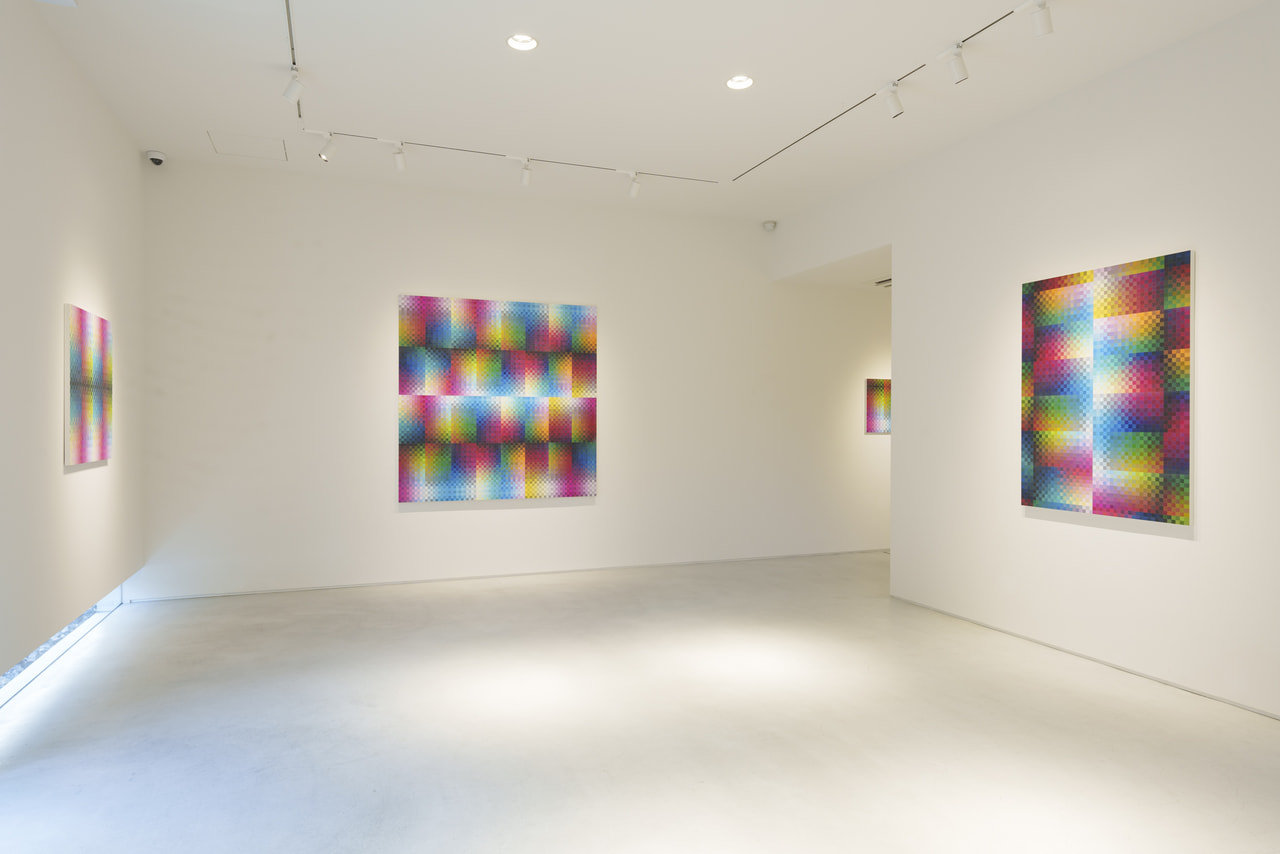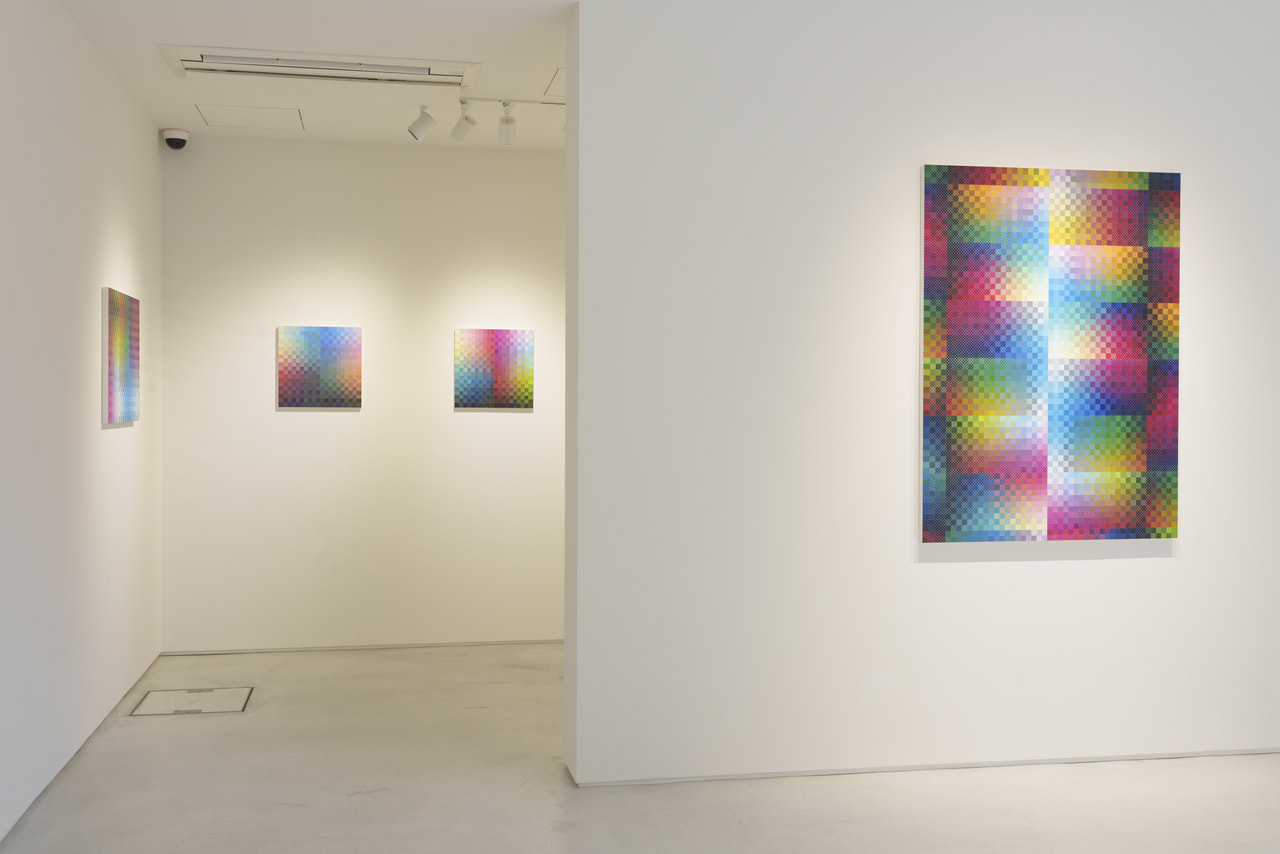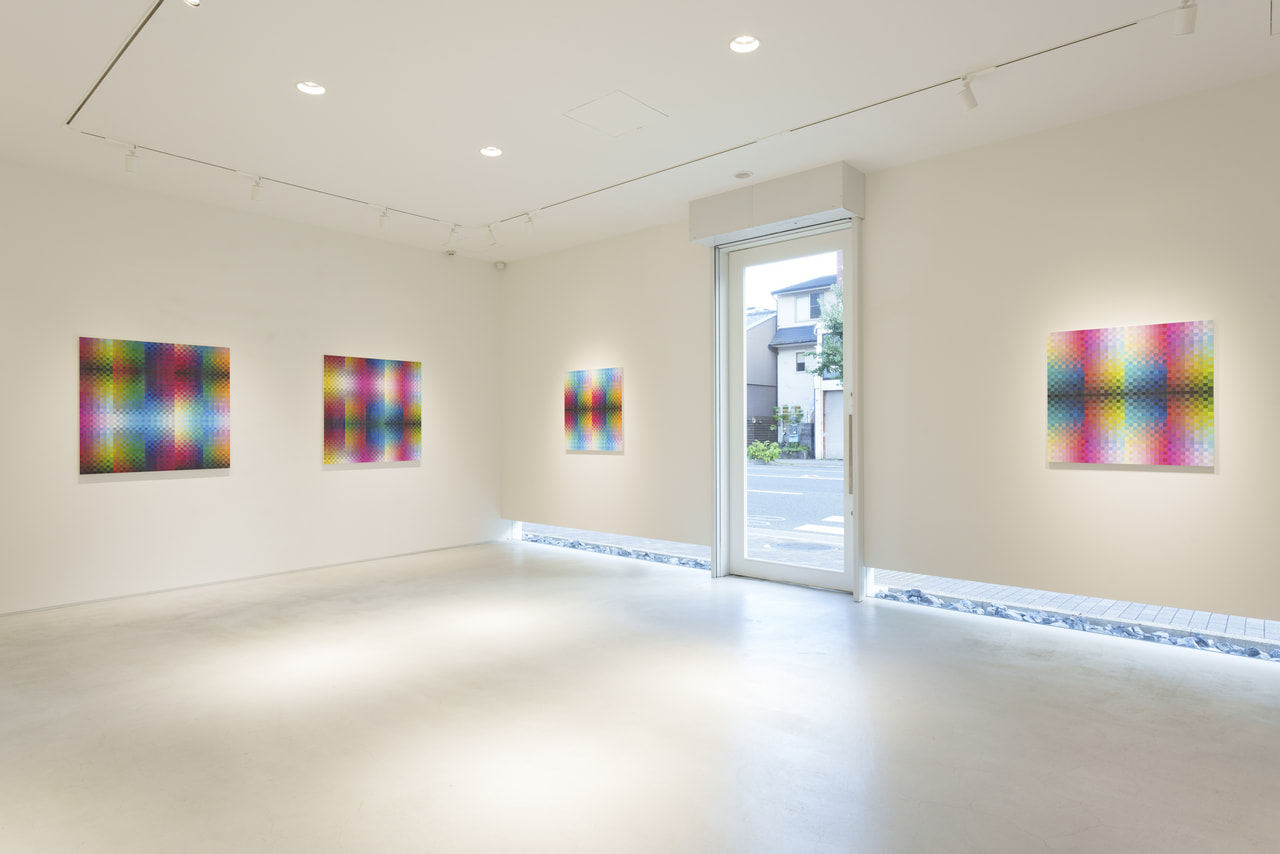Imura Art Gallery is pleased to present Tsuzuru Minamo [Composed Surfaces] a solo exhibition of the works of Aya Kawato.
With sponsorship from Kawashima Selkon Textiles, Kawato is currently overseeing the design and production of a tsuzure-ori tapestry for the Guest House at Expo 2025 Osaka, Kansai, Japan, the upcoming World Expo. The exhibition will display about 13 grid paintings inspired by tsuzure-ori fabric produced by Kawashima Textile.
Kawato was influenced by her father, a neuroscientist, from an early age. As a result, she became keenly aware that people perceive the world through their brains, and she became particularly interested in optical illusions. During her undergraduate years in Kyoto, she studied traditional Japanese dyeing and weaving, but after searching for a form of expression more suited to her ideas, she arrived at painting. While working on her doctorate at Tokyo University of the Arts, she began showing grid paintings examining the theme of "Controlled and Uncontrolled."
Keeping to this "Controlled and Uncontrolled" theme, Kawato has since developed it in various directions, including a series inspired by oshima tsumugi (a type of hand-woven silk textile), and a series that uses images of brain activity from experiments in neuroscience. This latest iteration, inspired by tsuzure-ori, features expansive compositions that cover the whole surface and vivid gradations that produce an impressive shimmering effect.
Tsuzure-ori is a technique for weaving entirely by hand that has been used all over the world since ancient times, but the distinctive feature of the tsuzure-ori made by Kawashima Textile is its use of color. Jinbei Kawashima II focused his efforts on the expression of paintings in textile form, and in the Meiji period, witnessing the advances being made in the direction of using pigments with more colors than ever before in nihonga (a Japanese style of painting), he began studying the use of more colors in tsuzure-ori. He then developed his own unique color-blurring technique and produced many textiles that were faithful to the original paintings. Kawato was impressed by the craftsmen at Kawashima Textile. She felt that the sight of them at their looms, weaving the weft threads into the warp threads was akin to watching the emergence of beautiful colors of the surface of water. This experience informs the exhibition title, “Tsuzuru Minamo” or “Composed Surfaces.
At first glance, these grid paintings can seem cold and inorganic, but viewers soon sense an innate warmth, perhaps because misalignments arising from repetitive manual work and discrepancies between reality and image arising from optical illusions are all incorporated, becoming part of the beauty of the work. The exhibition is an opportunity for a close examination of these paintings, Aya Kawato’s latest works.
この度イムラアートギャラリーは、川人綾の個展「綴るみなも」を開催いたします。
現在、川人は川島織物セルコンが協賛する2025年開催大阪・関西万博の迎賓館の綴織タピストリーのデザインと制作監修を行っています。本展では、川島織物の綴織からインスピレーションを受けて制作したグリッド・ペインティングを約13点展示いたします。
川人は幼い頃より神経科学者である父の影響を受け、人は脳を通して世界を把握しているということを強く意識するようになり、なかでも特に錯視効果に興味を抱きました。京都での学部生時代には、日本の伝統的な染織を学びますが、表現の模索の末に絵画制作に辿りつき、東京藝術大学大学院博士課程の頃より「制御とズレ」をテーマとするグリッド状の絵画(グリッド・ペインティング)を発表します。
これまで、川人は大島紬からインスピレーションを受けて制作したシリーズや、神経科学の実験で得られた脳活動画像を応用したシリーズなど、「制御とズレ」という一貫したテーマでありながら、様々な展開を見せてきました。今回の綴織に着想を得た新たな展開では、面的な構成と鮮やかなグラデーション、その効果としての揺らぎが印象的です。
綴織とは古代から世界各地で用いられてきた技法ですが、川島織物の綴織の特性はその色使いにあります。二代川島甚兵衛は絵画を織物で表現することに注力していましたが、明治になり日本画に用いられる顔料がそれまで以上に多色使いの方向へと改良研究されることを目の当たりにし、綴織の多色使いを研究しました。そして、独自の色ぼかし技法をつくりあげ、原画通りの織物を多く制作しました。川人は川島織物の職人達の製作風景に感銘を受け、織機に向かい緯糸を経糸に織り込んでいく姿が、まるで美しい色の水面を生み出しているように感じられ、「綴るみなも」というタイトルをつけました。
一見、無機質なグリッド・ペインティングにどこか温かみを感じるのは、手作業の積み重ねが生み出すズレや、錯視効果による現実とイメージのズレを、作品の美しさの一部として取り込んでいるからでしょう。是非会場で、川人が織りなす新作をお楽しみください。

